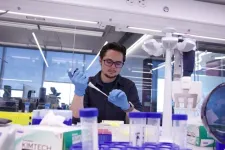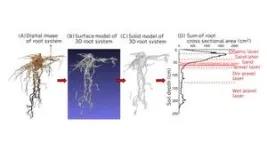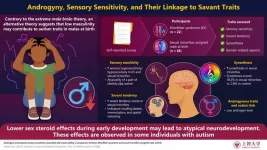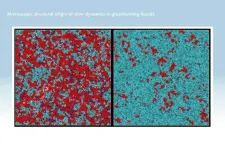(Press-News.org) Influential inventions often combine existing tools in new ways. The iPhone, for instance, amalgamated the telephone, web browser and camera, among many other devices.
The same is now possible in gene editing. Rather than employ separate tools for editing genes and regulating their expression, these distinct goals can now be combined into a single tool that can simultaneously and independently address different genetic diseases in the same cell.
Merging Gene Editing and Regulation
In a new paper in Nature Communications, researchers in the Center for Precision Engineering for Health (CPE4H) at the University of Pennsylvania School of Engineering and Applied Science (Penn Engineering) describe minimal versatile genetic perturbation technology (mvGPT).
Capable of precisely editing genes, activating gene expression and repressing genes all at the same time, the technology opens new doors to treating genetic diseases and investigating the fundamental mechanisms of how our DNA functions.
“Not all genetic diseases are solely caused by errors in the genetic code itself,” says Sherry Gao, Presidential Penn Compact Associate Professor in Chemical and Biomolecular Engineering (CBE) and in Bioengineering (BE) and the paper’s senior author. “In some cases, diseases with genetic components — like type I diabetes — are due to how much or little certain genes are expressed.”
One Tool, Multiple Functions
In the past, addressing multiple, unrelated genetic abnormalities at once — by, say, editing one gene and suppressing another — would have required multiple distinct tools. “We wanted to build a single platform that could precisely and efficiently edit DNA as well as upregulate and downregulate gene expression,” says Tyler Daniel, a doctoral student in the Gao Lab and one of the paper’s co-first authors.
The platform works by combining an improved “Prime Editor,” capable of modifying DNA sequences, with previously invented technologies for increasing and decreasing the expression of genes. “All these functions are orthogonal,” says Daniel. “They can happen independently of each other at the same time.”
“This level of precision for modifying DNA sequences and gene expression was not previously possible,” he continues. “Each task functions independently. It’s as if we took a car with a faulty navigation system and fixed the bug in that system while simultaneously turning up the volume on the stereo and turning down the air conditioning.”
The Power of Precision Editing
The team tested mvGPT on human liver cells with a mutation causing Wilson’s disease, successfully editing out the mutation while also upregulating a gene linked to type I diabetes treatment and suppressing another associated with transthyretin amyloidosis. In multiple tests, mvGPT achieved all three tasks with high precision, demonstrating its ability to target multiple genetic conditions simultaneously.
Because mvGPT takes up less space than three separate tools, the system is also easier to transport into cells. The researchers showed that mvGPT can be delivered by multiple means, including strands of mRNA and viruses used to deliver genetic editing tools.
“When you have a single tool that can accomplish all of these things at the same time,” says Gao, “you make the process so much simpler, because there’s less machinery you have to deliver to the cell.”
Moving Towards a Greater Impact
Now that the technology has shown promise in human cells, the researchers plan to test mvGPT in animal models, and against other diseases with genetic components, including cardiovascular diseases. “The more advanced our tools become,” continues Gao, “the more we can do to treat genetic diseases.”
This study was conducted at the University of Pennsylvania School of Engineering and Applied Science and supported by the National Science Foundation (CBET-2143626) and the National Institutes of Health (HL157714).
Additional co-authors include co-first authors Qichen Yuan and Hongzhi Zeng of Rice University; Emmanuel C. Osikpa, Qiaochu Yang, Advaith Peddi, Liliana M. Abramson and Boyang Zhang, also of Rice University; and Qingzhuo Liu, Yongjie Yang and Yong Xu of Baylor College of Medicine.
END
A new era in genetic engineering
Breakthroughs in gene editing and expression control with mvGPT
2025-01-08
ELSE PRESS RELEASES FROM THIS DATE:
Study identifies coastal black pine trees resistant to tsunamis and strong winds
2025-01-08
Researchers in Japan have found that the taller the Japanese black pine trees (Pinus thunbergii) along the coast, the deeper their roots go into the ground. Trees with deeper roots are more resistant to damage from tsunamis and strong winds. Their findings suggest that the resilience of coastal P. thunbergii trees may be improved by inducing deep root growth, specifically in short trees. The study was published in the Journal of Forest Research.
Many P. thunbergii trees have been planted in coastal forests in Japan because they are salt-tolerant and can grow in sandy soils lacking nutrients. P. thunbergii ...
From gender dysphoria to special skills: decoding the link
2025-01-08
Why have males been overrepresented among geniuses in STEM fields so far? A popular biological psychological explanation is the Extreme Male Brain Theory (EMB), which suggests that an overdose of prenatal androgen (male hormone) leads to the hyper-masculine brain type, characterized by a strong geek tendency and insensitivity to others' feelings. This theory explains the etiology of autism spectrum disorder (ASD) and inevitably connects prenatal androgen action with talents in specific fields.
However, the current research shows evidence that the opposite story might be true: reduced androgen exposure in ...
Study advances possible blood test for early-stage Alzheimer’s disease
2025-01-08
Declining blood levels of two molecules that occur naturally in the body track closely with worsening Alzheimer’s disease, particularly in women. Levels were found to drop gradually, from women with no signs of memory, disorientation, and slowed thinking to those with early signs of mild cognitive impairment. Decreases were more prominent in women with moderate or severe stages of the disease. Declines in men were evident in only one molecule, revealing a disease-specific difference between the sexes.
Six million Americans, most over the age of 65 and predominantly women, are currently ...
New international research collaboration to develop and test an improved dietary supplement for pregnant women
2025-01-08
New international research collaboration to develop and test an improved dietary supplement for pregnant women
Poor nutrition during pregnancy can have serious consequences for both maternal and child health. A new research collaboration – ‘Mother’s Micronutrient Supplement for Pregnancy and Lactation’ (MoMS) – between researchers in Kenya, Norway and Denmark aims to develop and test a new, improved dietary supplement to reduce incidences of low birth weight, improve maternal and child health, and enhance growth and cognitive development in children. MoMS ...
Presenting a path forward for future genetically-modified pig heart transplants: lessons learned from second patient
2025-01-08
Continuing significant advancements in the field of xenotransplantation, surgeon-scientists from the University of Maryland School of Medicine provided an extensive analysis on the second patient in the world to receive a genetically-modified pig organ. Lawrence Faucette, 58, received a pig heart at the University of Maryland Medical Center in 2023 to treat his end-stage heart failure. He lived for 40 days before choosing to forgo additional treatment after the transplant began to fail due to rejection.
The report documenting insights ...
When the past meets the future: Innovative drone mapping unlocks secrets of Bronze Age ‘mega fortress’ in the Caucasus
2025-01-08
A Cranfield University, UK, academic has used drone mapping to investigate a 3000-year-old ‘mega fortress’ in the Caucasus mountains. Dr Nathaniel Erb-Satullo, Senior Lecturer in Architectural Science at Cranfield Forensic Institute, has been researching the site since 2018 with Dimitri Jachvliani, his co-director from the Georgian National Museum, revealing details that re-shape our understanding of the site and contribute to a global reassessment of ancient settlement growth and urbanism.
Fortress settlements in the South Caucasus appeared between 1500-500 BCE, and represent an ...
AI could improve the success of IVF treatment
2025-01-08
During IVF treatment, doctors use ultrasound scans to monitor the size of follicles - small sacs in the ovaries containing eggs - to decide when to give a hormone injection known as the ‘trigger’ to prepare the eggs for collection and ensure that they are ready to be fertilised with sperm to create embryos. The timing of the trigger is a key decision, as it works less effectively if the follicles are too small or too large at the time of administration. After the eggs are collected and fertilised by sperm, an embryo is then selected and implanted into the womb to hopefully lead to pregnancy.
Researchers used ‘Explainable ...
Moving in sync, slowly, in glassy liquids
2025-01-08
Tokyo, Japan – Glass might seem to be an ordinary material we encounter every day, but the physics at play inside are actually quite complex and still not completely understood by scientists. Some panes of glass, such as the stained-glass windows in many Medieval buildings, have remained rigid for centuries, as their constituent molecules are perpetually frozen in a state of disorder. Similarly, supercooled liquids are not quite solid, in the sense that their fundamental particles do not stick to a lattice ...
Climate change linked with worse HIV prevention and care
2025-01-08
Toronto, ON – New challenges in HIV prevention and care are emerging due to climate change, according to a review published earlier this month in Current Opinions in Infectious Disease.
Researchers from the University of Toronto analyzed 22 recent studies exploring HIV-related outcomes in the context of climate change and identified several links between extreme weather events and HIV prevention and care.
Climate change-related extreme weather events, such as drought and flooding, were associated with poorer HIV prevention outcomes, including ...
Exeter launches second round of global funding to tackle antifungal drug resistance
2025-01-08
A University of Exeter funding scheme designed to combat the global challenge of fungal antimicrobial resistance (fAMR) has announced a new call for applications.
The FAILSAFE project (Fungal AMR Innovations for LMICS: Solutions and Access For Everyone) is a groundbreaking initiative tackling antifungal drug resistance. The project aims to promote worldwide innovations to tackle the global health threat of fungal infections in humans, plants and animals increasingly growing resistant to available treatment.
Already, the FAILSAFE project has awarded more than £1.7 million in grants ...
LAST 30 PRESS RELEASES:
SIMJ announces global collaborative book project in commemoration of its 75th anniversary
Air pollution exposure and birth weight
Obstructive sleep apnea risk and mental health conditions among older adults
How talking slows eye movements behind the wheel
The Ceramic Society of Japan’s Oxoate Ceramics Research Association launches new international book project
Heart-brain connection: international study reveals the role of the vagus nerve in keeping the heart young
Researchers identify Rb1 as a predictive biomarker for a new therapeutic strategy in some breast cancers
Survey reveals ethical gaps slowing AI adoption in pediatric surgery
Stimulant ADHD medications work differently than thought
AI overestimates how smart people are, according to HSE economists
HSE researchers create genome-wide map of quadruplexes
Scientists boost cell "powerhouses" to burn more calories
Automatic label checking: The missing step in making reliable medical AI
Low daily alcohol intake linked to 50% heightened mouth cancer risk in India
American Meteorological Society announces Rick Spinrad as 2026 President-Elect
Biomass-based carbon capture spotlighted in newly released global climate webinar recording
Illuminating invisible nano pollutants: advanced bioimaging tracks the full journey of emerging nanoscale contaminants in living systems
How does age affect recovery from spinal cord injury?
Novel AI tool offers prognosis for patients with head and neck cancer
Fathers’ microplastic exposure tied to their children’s metabolic problems
Research validates laboratory model for studying high-grade serous ovarian cancer
SIR 2026 delivers transformative breakthroughs in minimally invasive medicine to improve patient care
Stem Cell Reports most downloaded papers of 2025 highlight the breadth and impact of stem cell research
Oxford-led study estimates NHS spends around 3% of its primary and secondary care budget on the health impacts of heat and cold in England
A researcher’s long quest leads to a smart composite breakthrough
Urban wild bees act as “microbial sensors” of city health.
New study finds where you live affects recovery after a hip fracture
Forecasting the impact of fully automated vehicle adoption on US road traffic injuries
Alcohol-related hospitalizations from 2016 to 2022
Semaglutide and hospitalizations in patients with obesity and established cardiovascular disease
[Press-News.org] A new era in genetic engineeringBreakthroughs in gene editing and expression control with mvGPT







